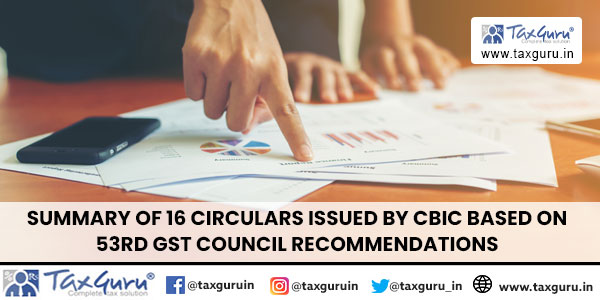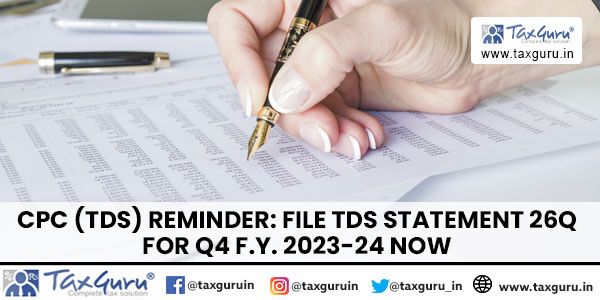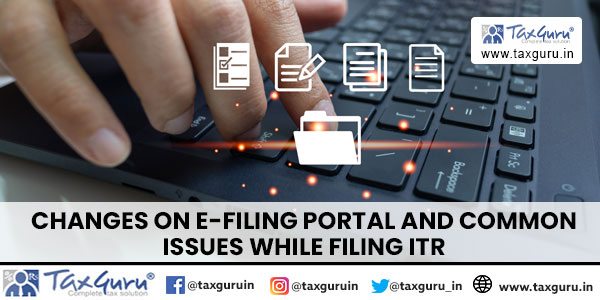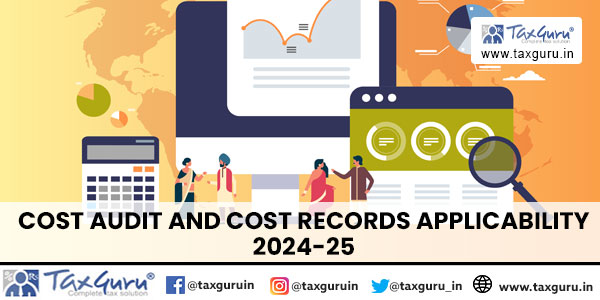REVISED ICDS (INCOME COMPUTATION & DISCLOSURE STANDARDS, APPLICABLE FROM AY 2017-18) TOGETHER WITH ITS COMPARISON WITH RESPECTIVE ACCOUNTING STANDARDS
In my previous write-up titled ‘Comparison of Revised ICDS Applicable From AY 2017-18 with Respective Accounting Standards- Part I’ following ICDS has been covered:
- I (Accounting Policies)
- II (Valuation of Inventories)
- III(Construction Contracts)
- IV (Revenue Recognition)
- V (Tangible Fixed Assets)
In this write-up, rest of the following ICDS are covered:
- VI (Effects of changes in Foreign Exchange Rates)
- VII (Government grants)
- VIII (Securities)
- IX (Borrowing Costs)
- X (Provisions, contingent liabilities and contingent assets)
ICDS VI (Effects of changes in Foreign Exchange Rates)
The significant deviations from AS- 11 (The Effects of change in Foreign Exchange Rate) are as under:-
- Paragraph 46A of AS-11 grants an option to recognize exchange difference arising on reinstatement of long term foreign currency monetary items under “Foreign Currency Monetary Item Translation Difference Account (FCMITDA)” and amortize the same over the balance period of such long term asset or liability whereas ICDS provides that profit/ (Loss) arising at the year end on reinstatement of monetary items shall be recognized as income or expense.
- Marked to market gains or losses are unrealized in nature. All gains or losses on forward exchange or similar contracts entered into for trading or speculation contracts shall be recognized only on settlement.
- Clarification issued that non-monetary items being inventory carried at fair value shall be converted at rate prevailing on date when such NRV is determined which is as per provisions of AS-II.
| Effects of changes in Foreign Exchange Rates | ||
| Basis of difference | AS- 11 | ICDS- VI |
| Revenue monetary items (like trade receivables, payables) | – Converted into reporting currency by applying the closing rate
– Exchange difference recognized in P&L a/c |
– Converted into reporting currency by applying the closing rate
– Exchange difference recognized as income or expense subject to provisions of Rule 115 |
| Revenue non-monetary items (e.g. Inventory) | If item is carried at historical cost – Reported at the exchange rate on the date of transaction
If item is carried at fair value – Reported at the exchange rate that existed when the value was determined
|
Converted into reporting currency using the exchange rate at the date of the transaction |
| Capital monetary items – Relating to Imported assets and domestic assets | – Requires recognition in P&L A/c
– Option of capitalization u/s. 211(3C) of Cos Act, 1956 as per which exchange differences arising in case of long-term foreign currency monetary items shall be either adjusted to capital asset or accumulated in FCMITDA (Paras 46 & 46A) |
– Requires recognition as income or expense subject to provisions of s.43A
– No paras 46 and 46A exists – No distinction recognized between capital and revenue items |
| Foreign operations | Foreign operation is a subsidiary, associate, joint venture or branch of the reporting enterprise, the activities of which are based or conducted in a country other than the country of the reporting enterprise | Foreign operations of a person is a branch, by whatever name called, of that person, the activities of which are based or conducted in a country other than India |
| Integral foreign operation | – Same principles as for own assets and liabilities
– Exchange differences are recognized in P&L A/c |
– Subject to S. 43A and Rule 115, similar to AS 11
– No distinction recognized between capital and revenue items |
| Non-integral foreign operations | – All assets & liabilities and income & expense items are translated at closing rates
– Exchange differences are accumulated in FCTR A/c and to be taken to P&L a/c on disposal of non-integral foreign operations |
– Similar to ICAI AS-11 except that, (subject to S.43A & Rule 115) resulting exchange differences are to be recognized as income or expense instead of accumulation in FCTR A/c
– No distinction recognized between capital and revenue items |
| Forex derivatives for hedging purpose (Capital and revenue a/c) | – Premium/discount is amortized over life of contract
– Restated on MTM basis at year end and difference is recognized in P&L – Profit/ loss on cancellation or renewal is also recognized in P&L |
Same as AS without distinguishing between contracts on capital account and revenue account (subject to s.43A applicable to imported assets) |
| Forex derivative for trading / speculation purposes / firm commitments /highly probable forecast transactions | – Forward contract is restated at year end on mark to market basis and difference is recognized in P&L
– No amortization of premium/discount |
– Premium, discount or exchange difference shall be recognized at the time of settlement
– No distinction recognized between contracts on capital account and revenue account |
| Forex derivatives not covered by ICDS VI (futures, interest rate swaps, etc) | – Not covered by AS 11 being a derivative contract covered by AS 30, 31 & 32 which are yet to be notified under Companies Act 2013
– Currently ICAI Guidance Note requires recognition of loss on MTM basis but gain to be ignored |
– Forex derivatives not covered by ICDS VI.
– ICDS I on accounting policies provides that MTM loss or an expected loss shall not be recognized unless permitted under other ICDS. |
ICDS VII (Government Grants)
The significant deviations from AS-12 (Government Grants) are as under:-
- Grant in respect of depreciable fixed assets is to be reduced from actual cost of such assets. This treatment is similar to Explanation 10 to Sec 43(1). However, AS – 12 (Government Grants) prescribes that the same may either be adjusted with the value of assets or recognized as income on reasonable basis over a period of time.
- Additional disclosures are required to be made for each previous year which inter-alia includes nature & extent of grants reduced from the block of asset, grants not reduced from the block of
assets with reasons & grants not recognized as income with reasons.
| Government Grants | ||
| Basis of difference | AS- 12 | ICDS- VII |
| Recognition of grant | – On reasonable assurance of compliance of attached conditions and reasonable certainty of ultimate collection
– Mere receipt of grant is not sufficient |
– On reasonable assurance of compliance of attached conditions and reasonable certainty of ultimate collection
– Recognition cannot be postponed beyond date of actual receipt |
| Grant in the nature of promoters contribution | To be credited to capital reserve and to be treated as shareholders’ funds | – ICDS silent on this category |
| Grants relatable to depreciable fixed assets | To be reduced from cost or recognized as deferred revenue by systematic credit to P&L A/c | To be reduced from cost of fixed asset [in line with Explanation 10 to S. 43(1)] |
| Relatable to non- depreciable fixed assets | – To be credited as capital reserve, if no conditions attached to the grant
– To be credited to P&L A/c over period of incurring cost of meeting conditions of grant |
– To be considered as income on an upfront basis, if there are no conditions attached to grant [Refer discussion at para II(a)]
– To be treated as income over period over which cost of meeting conditions is incurred |
| Grants other than those covered above | Revenue grant to be credited as income or reduced from related expense | Grant to be treated as income over period over which cost of meeting conditions is incurred. |
| Compensation for expenses/ loss incurred or for giving immediate financial support | To be recognized as income in the year in which it is receivable | To be recognized as income in the year in which it is receivable |
| Disclosure requirement | Accounting policy adopted for grants including the method of presentation, extent of recognition in the financial statements, accounting of non-monetary assets given at concession/ free of cost | Requires disclosure of nature and extent of recognized as well as unrecognized grants. It also requires disclosure of reasons for non-recognition. |
ICDS VIII (Securities, held as stock in trade)
Salient feature of the ICDS:
- This ICDS deals with securities held as stock-in-trade and not for securities held as investment.
- Where a security is acquired in exchange for another security, cost shall be fair value of the security acquired.
- Securities listed on a recognized stock exchange shall be valued at actual cost as initially recognized or net realizable value, whichever is lower.
- Securities not listed on a recognized stock exchange shall be valued at actual cost as initially recognized.
| Securities | ||
| Basis of difference | AS- 13 | ICDS- VIII |
| Applicability | – AS applicable to accounting for investments
– AS clarifies that principles applicable to ‘current investments’ can apply to securities held as stock-in-trade |
– ICDS applicable to securities held as stock-in-trade
– ‘Securities’ defined to have meaning assigned in S.2(h) of SCRA except derivatives referred in s.2(h)(1a) of SCRA and shall include share of a company in which public are not substantially interested but shall not include derivatives referred to in sub-clause (ia) of that clause (h). |
| Security acquired against non-monetary consideration | In case of acquisition of securities in exchange for shares or other securities issued or another asset, cost of security acquired should be recorded either at (a) fair market value of securities issued or (b) fair market value of asset given up, whichever is more clearly evident | In case of acquisition of securities in exchange for other securities issued or another asset, actual cost of security acquired shall be recorded at fair value of security acquired |
| Year-end valuation of securities | Current investments to be valued at lower of cost or fair value either on individual investment basis or by category of investment but not on global basis. | – Securities should be valued at lower of cost or NRV. Comparison of cost and NRV shall be done category-wise.
– Securities are classified under following categories (a) shares; (b) debt; (c) convertible securities; and (d) other securities |
| Opening value of securities | No specific provision | – Value of opening inventory of securities shall be the same as the value of securities at the end of the immediately preceding financial year
– In case of commencement of business, Cost of security on the day of commencement of business will be opening value |
| Valuation of unlisted or thinly traded securities | No specific provision | Valuation of unlisted or thinly traded securities shall be valued at actual cost initially recognized |
| Ascertainment of cost | Cost formulae are the same as those specified in AS 2 (e.g. FIFO; average cost, etc.) | Cost which cannot be ascertained by specific identification shall be determined on the basis of FIFO method or weighted average formula. |
ICDS IX (Borrowing Costs)
The significant deviations from AS- 16 (Borrowing Costs) are as under:-
- This ICDS deals with borrowing cost other than relating to exchange differences arising from foreign currency borrowings. The same will be treated in terms of ICDS on ‘The Effect of Changes in Foreign Exchange Rate’
- Borrowing Cost in respect of borrowings partly used for acquisition of the qualifying asset to be capitalized in accordance with the following formula:
(A)* (B)/(C)
(A) Borrowing cost except directly relatable to specific purpose
(B) Average cost of qualifying asset at the first day and last day of the previous year and
(C) Average cost of asset at the first day and last day of the previous year.
- Unlike AS -16, suspension of capitalization of borrowing cost is not covered in the ICDS.
| Borrowing Costs | ||
| Basis of difference | AS- 16 | ICDS- IX |
| Borrowing cost | Borrowing cost includes exchange difference to the extent that they are regarded as an adjustment to interest costs | Borrowing cost does not include exchange differences arising from foreign currency borrowings |
| Qualifying assets | Qualifying asset defined to be an asset which necessarily takes a substantial, period of time to get ready for its intended use or sale | Qualifying assets means
– Inventory that require a period of 12 months or more to bring them to a saleable condition – Specified tangible and intangible assets are qualifying assets (regardless of substantial period condition) |
| Commencement and cessation of capitalization | In case of specific borrowing | |
| Capitalisation will commence when all the three conditions are satisfied (a) incurrence of capital expenditure (b) incurrence of borrowing cost (c) construction activity is in progress and cessation from the date when asset is ready to use | Capitalization will commence from date of borrowing of funds and cessation from the date when asset is put to use | |
| In case of general borrowing | ||
| Same as in the case of specific borrowing | Capitalization will commence from date of utilization of funds and cessation from the date when asset is put to use | |
| Methodology of capitalization | In case of specific borrowing | |
| Directly attributable to borrowing cost | Directly attributable to borrowing cost | |
| In case of general borrowing | ||
| Weighted average cost of borrowing applied to capital expenditure | Prorate borrowing cost allocation as per normative formulae (Refer note 2) | |
| Income from temporary deployment of funds | Income from temporary deployment of unutilised funds from specific loans to be reduced from borrowing cost | No similar provision in ICDS |
| Suspension of capitalization | Capitalization of borrowing costs should be suspended during extended periods in which active development is interrupted | No similar provision in ICDS |
ICDS X (Provisions, contingent liabilities and contingent assets)
The significant deviations from AS-29 (Provisions, Contingent Liabilities & Contingent Assets) are as under:-
- AS-29 requires the recognition of a provision when it is ‘probable’ that there will be outflow of resource. However, under ICDS provision is to be recognized when there is ‘reasonable certainty’ (more likely than not) for the outflow of resources.
| Provisions, contingent liabilities and contingent assets | ||
| Basis of difference | AS- 29 | ICDS- X |
| Onerous executory contracts | – Includes onerous executory contracts within its scope
– Upfront recognition of liabilities required under onerous contracts |
Onerous executory contracts excluded from the scope of ICDS |
| Recognition of provision | – Provision shall be recognized when it is ”probable” that an outflow of economic resources will be required to settle an obligation
– Provision is not discounted to NPV |
– Provision shall be recognized when it is ”reasonably certain” that an outflow of economic resources will be required to settle an obligation
– Provision is not discounted to NPV |
| Recognition of contingent asset and reimbursement claims | Contingent asset / reimbursement claims are recognized when the realization of related income is ”virtually certain” | Contingent asset/reimbursement claims are recognized when the realization of related income is ”reasonably certain” |
| Meaning of obligation | Clarifies that obligations may be legally enforceable and may also arise from normal business practice, custom and a desire to maintain good business relations or act in an equitable manner. | No specific guidance on meaning of ‘obligation |
Author: C S Ekta Maheshwari is the Author of this article and is Company Secretary by profession. The Author can be reached at csektamaheshwari14@gmail.com
Disclaimer: The entire contents of this article is solely for information purpose and have been prepared on the basis of relevant provisions and as per the information existing at the time of the preparation.. It doesn’t constitute professional advice or a formal recommendation. The author has undertook utmost care to disseminate the true and correct view and doesn’t accept liability for any errors or omissions. You are kindly requested to verify & confirm the updates from the genuine sources before acting on any of the information’s provided herein above.































